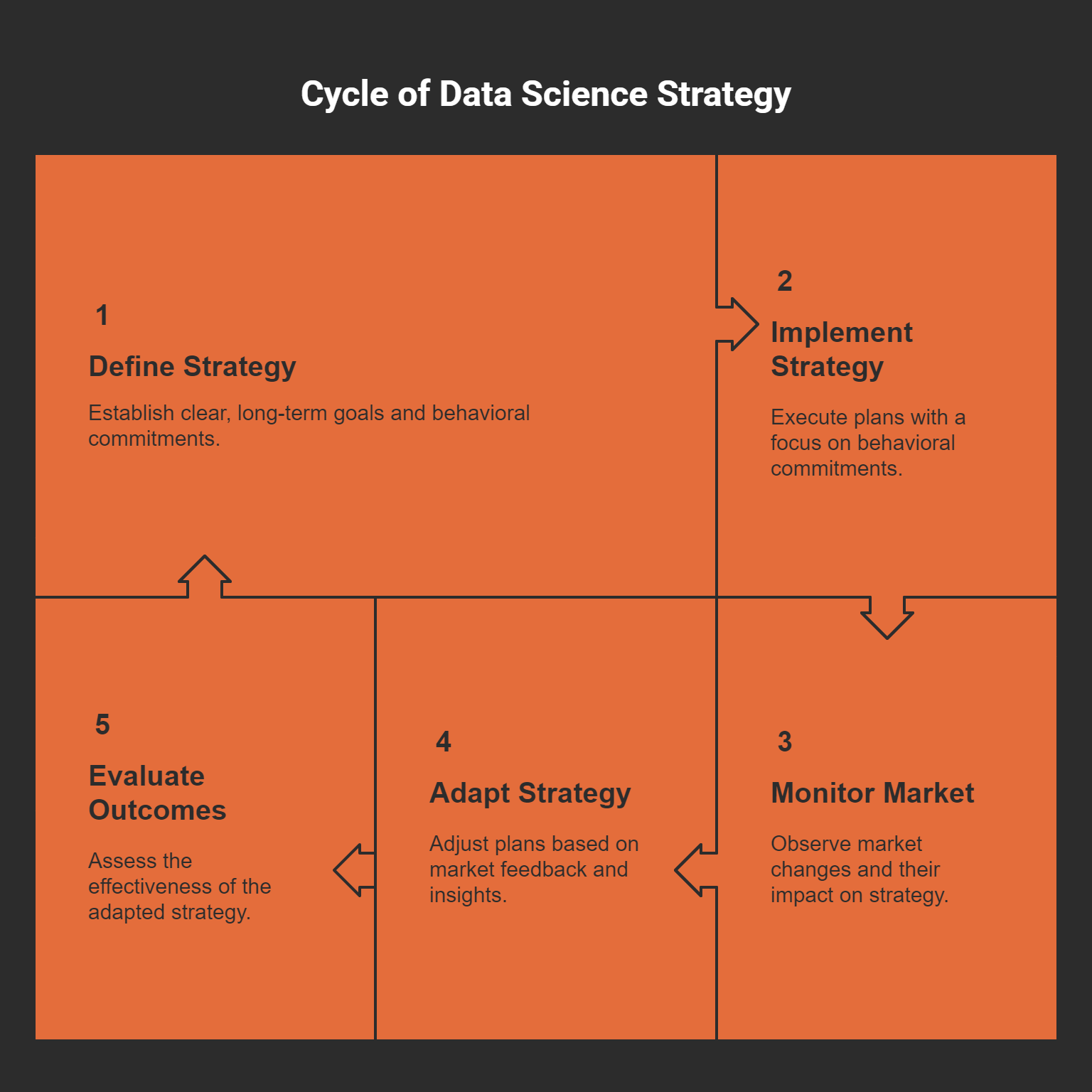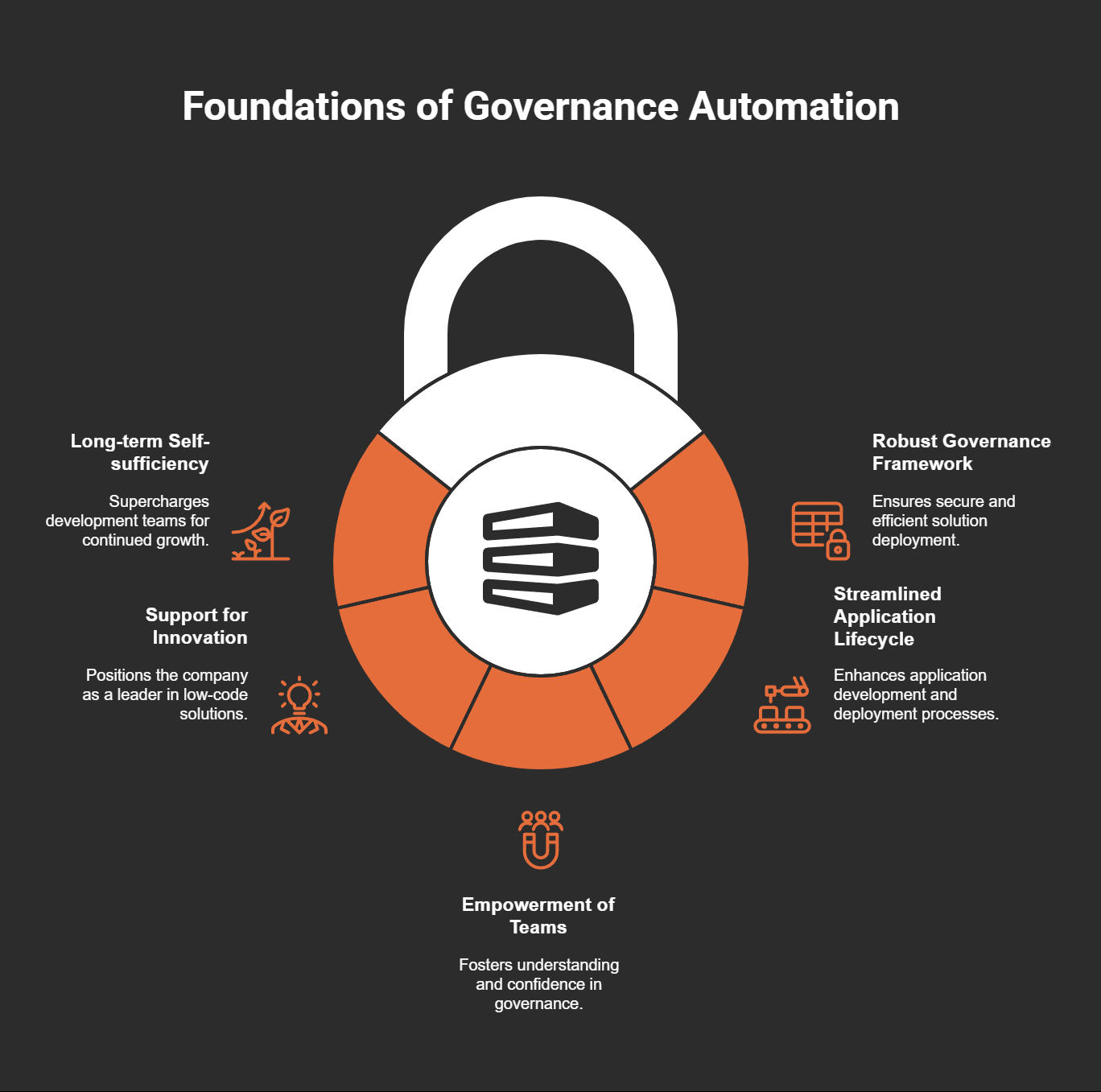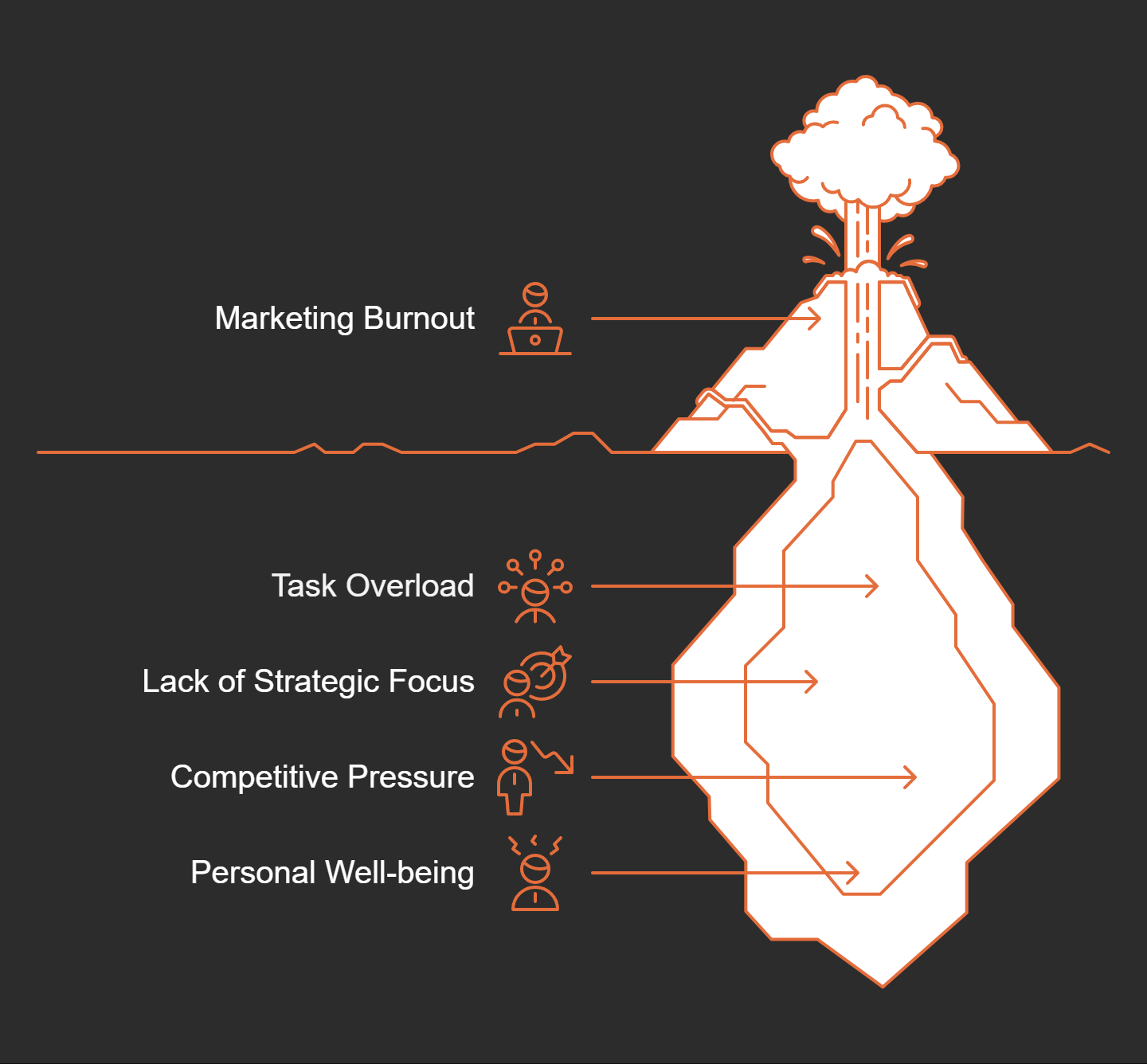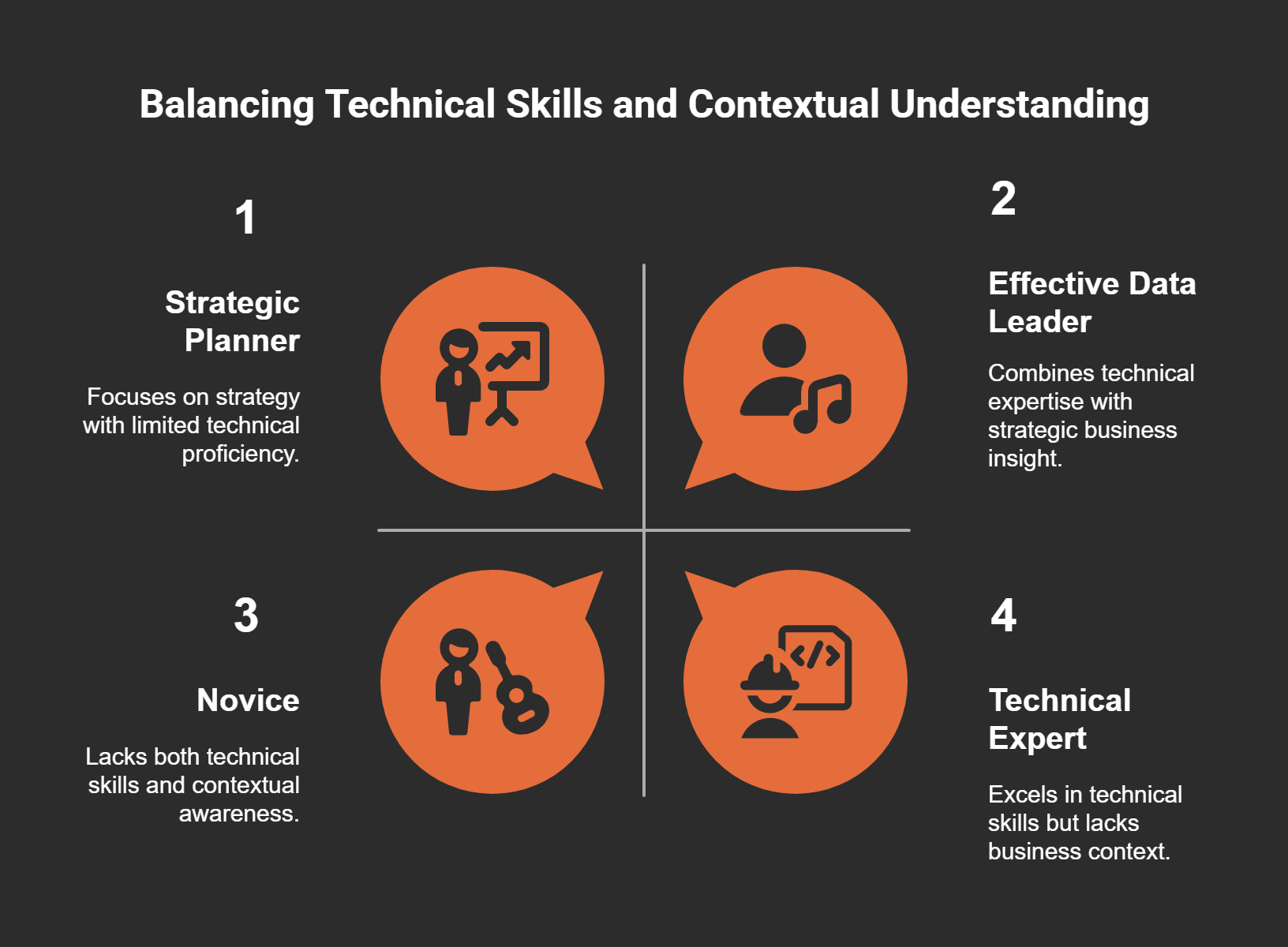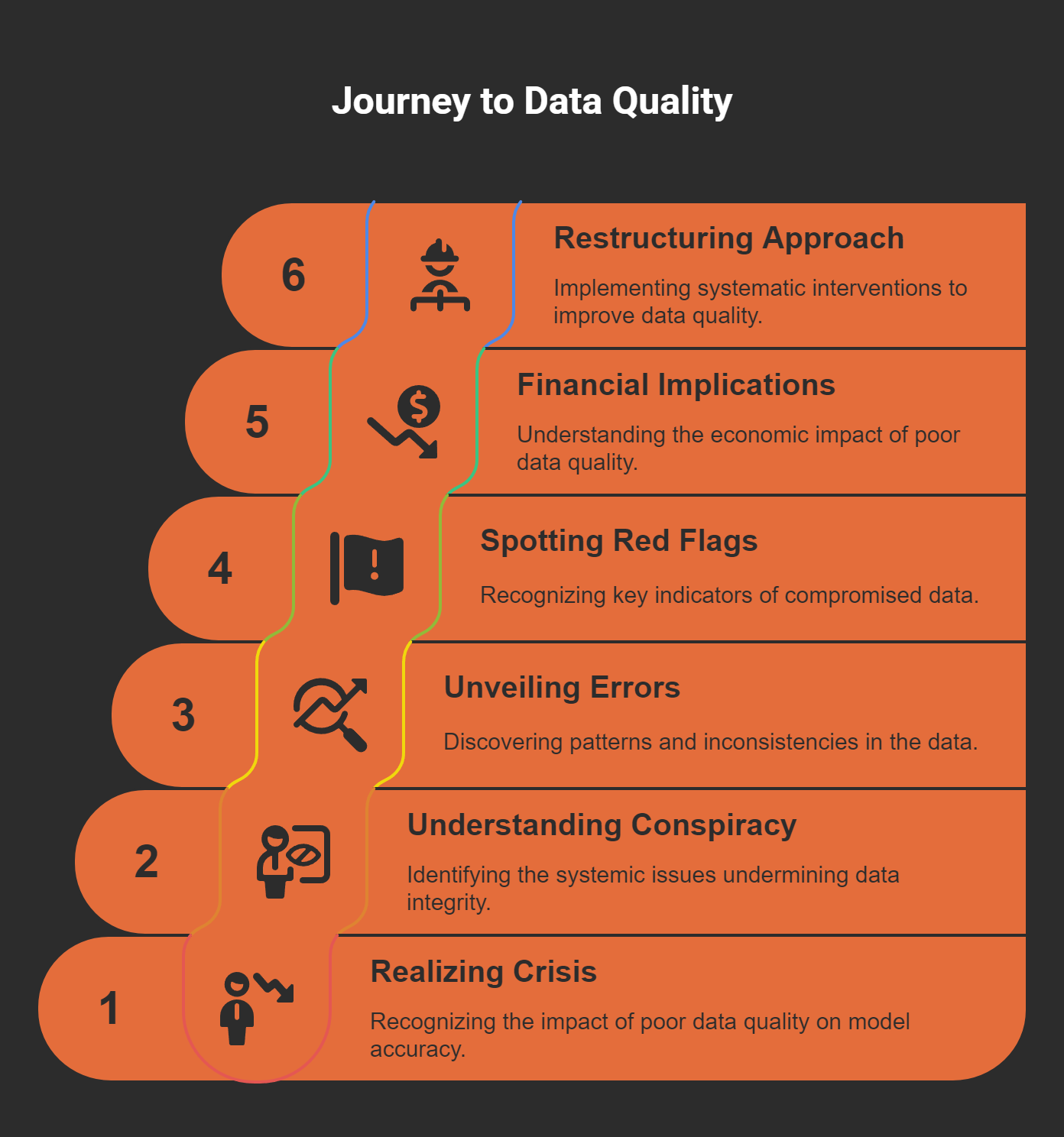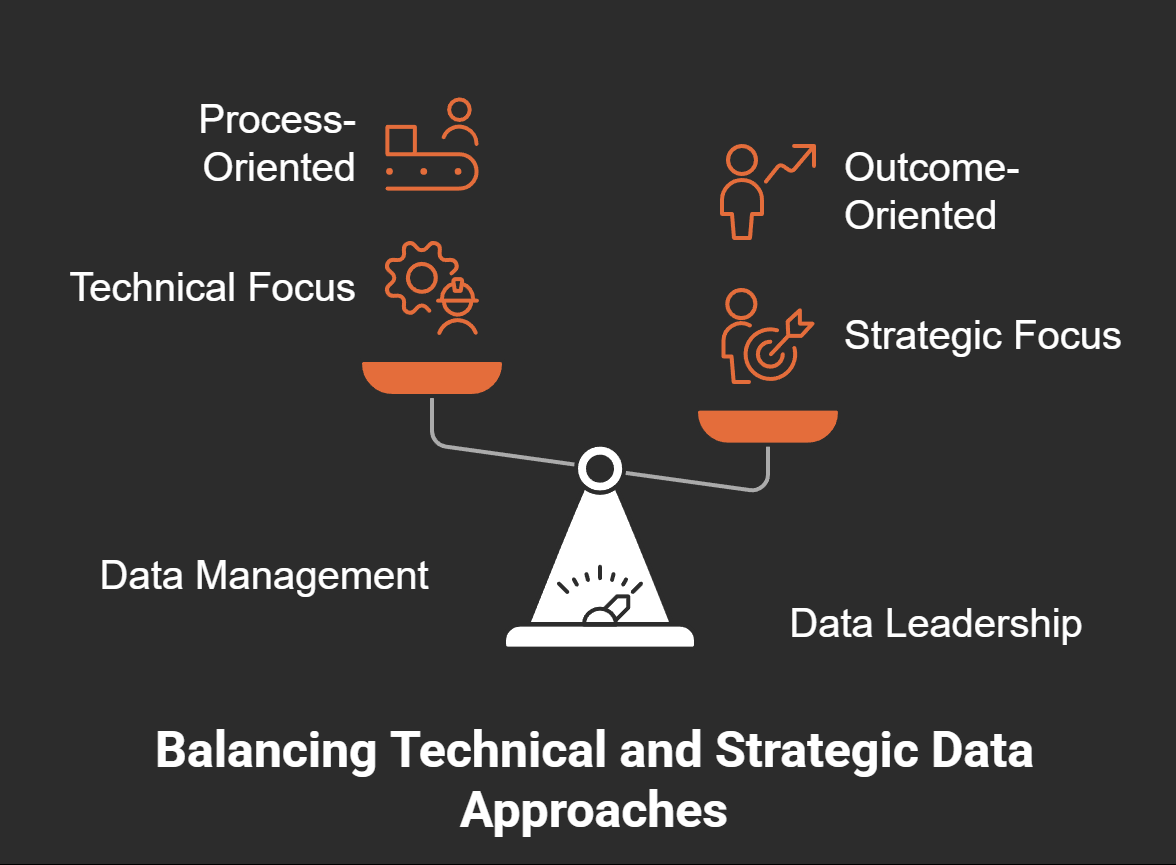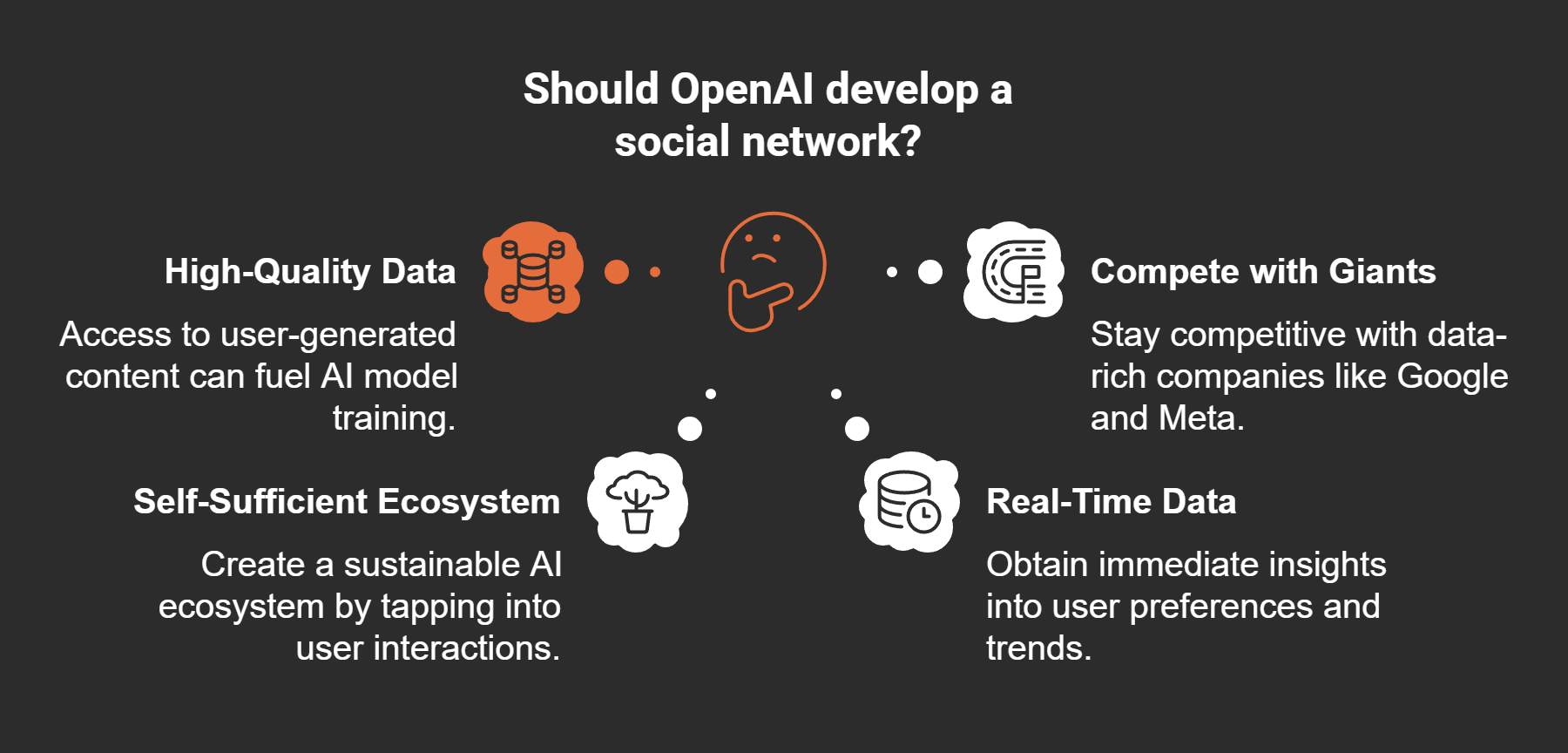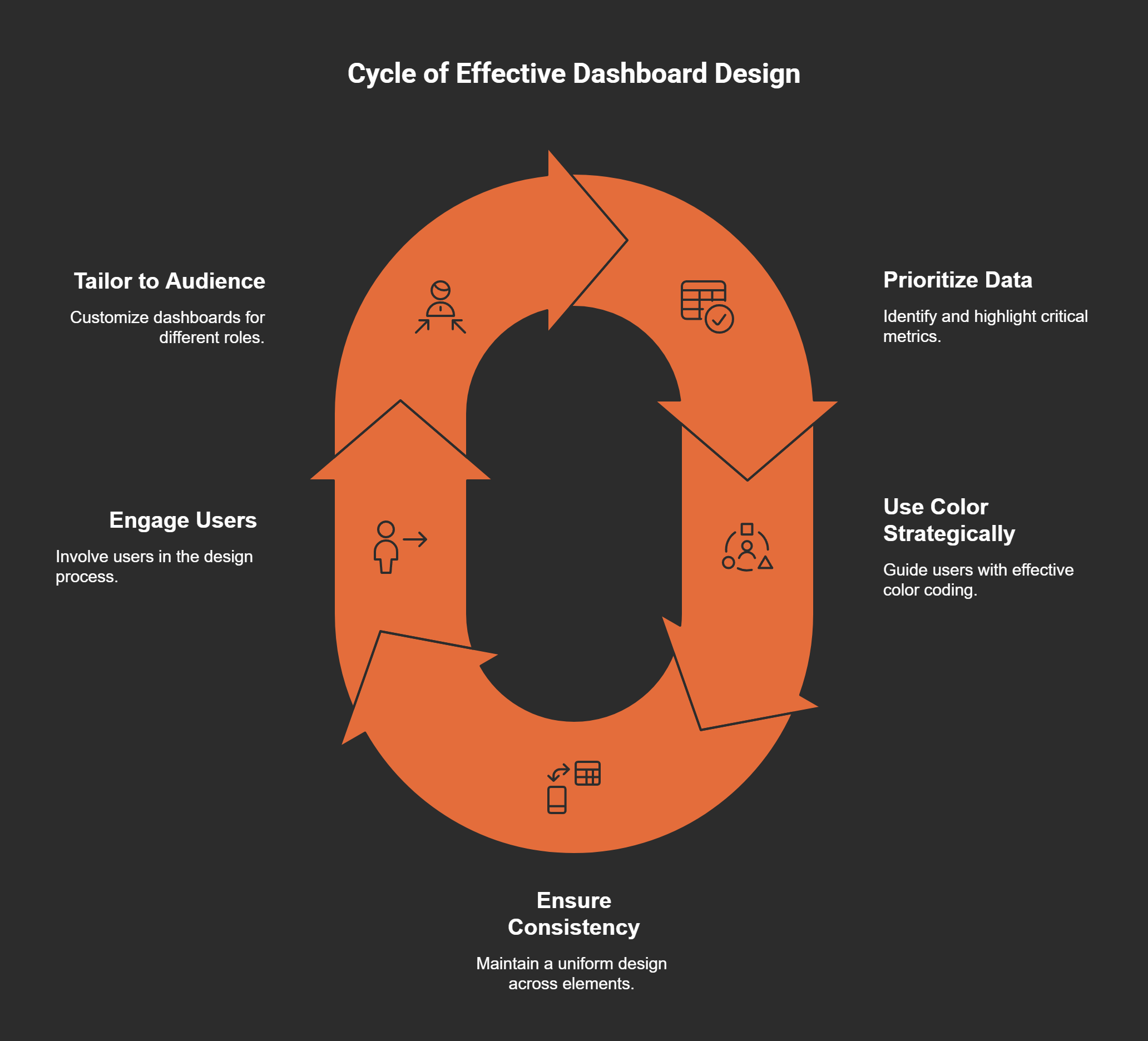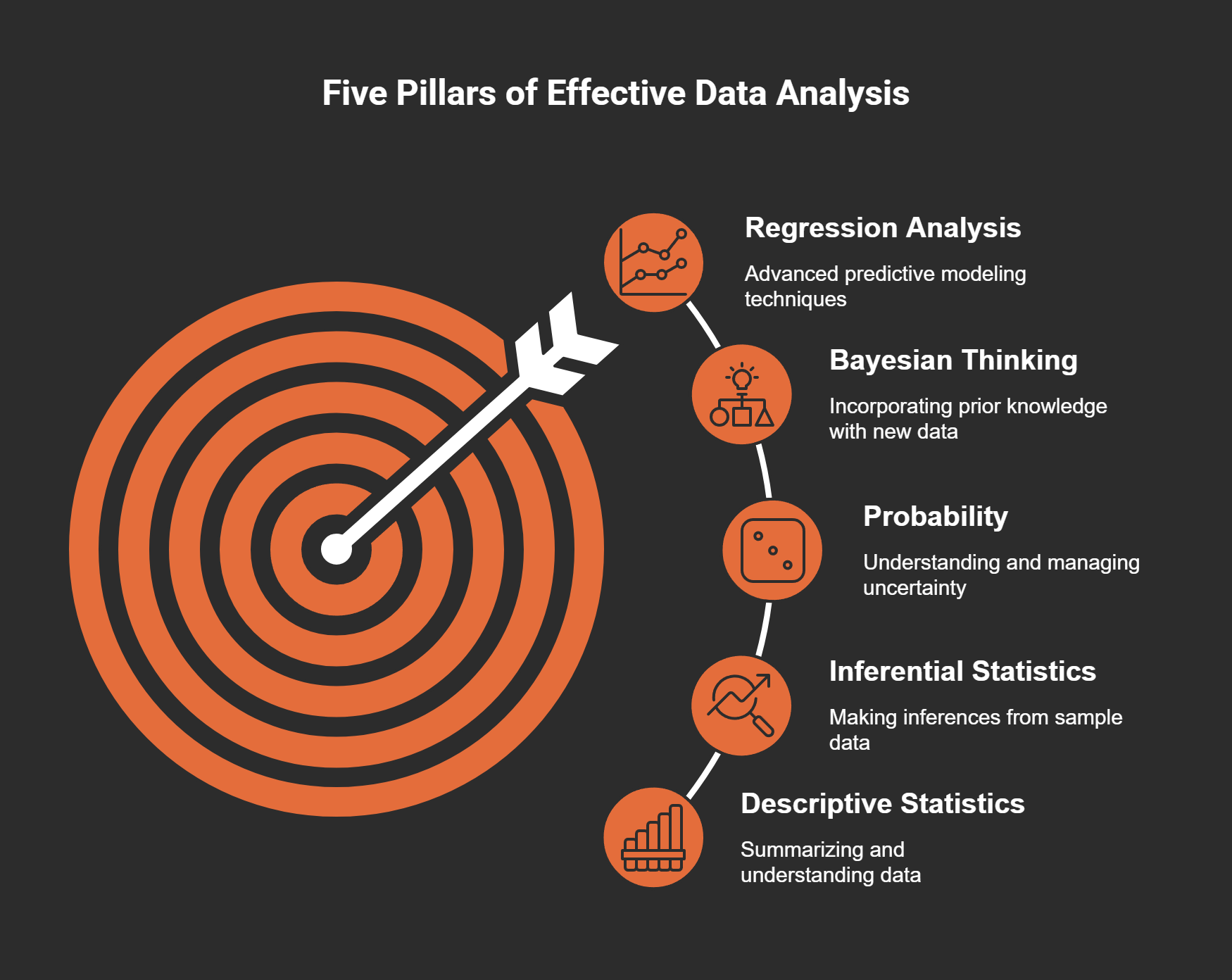Transforming Data Science Strategies: From Plans to Behavioral Commitments
Description
While navigating the intricate world of data science, I’ve encountered countless misguided attempts at formulating strategies. The realization struck me that many organizations often mistake detailed plans for effective strategies. I remember a particular workshop I facilitated where a financial services company presented their 18-month plan, which was essentially obsolete within months due to shifting market conditions. This experience served as a turning point in understanding how a genuine data strategy transcends mere activities and instead focuses on establishing behavioral commitments that truly differentiate organizations.
Understanding Plans vs. Strategies
Defining Plans and Strategies
Let’s start by clarifying what we mean by plans and strategies. A plan typically includes a list of tasks, timelines, and deliverables. It’s like a roadmap, guiding us step by step. In contrast, a strategy is broader. It involves a commitment to a specific pattern of behavior intended to achieve long-term goals. As Gary Pisano aptly puts it, “A strategy is nothing more than a commitment to a pattern of behavior intended to help win a competition.” This distinction is crucial for any organization wanting to thrive.
Common Misconceptions in Organizations
Many organizations fall into the trap of thinking that having a detailed plan equates to having a solid strategy. This leads to confusion and sometimes frustration. After all, plans can become obsolete quickly, especially in fast-paced environments. Have you ever witnessed a team cling to a rigid plan, only to watch it fail when market conditions change?
* Misconception: Plans are effective substitutes for strategy.
* Reality: Plans without a guiding behavioral framework often lead to subpar outcomes.
The Impact of Market Changes on Rigid Planning
Here’s a thought to ponder: how often do market conditions shift unexpectedly? If your organization relies solely on a fixed plan, you might find yourself at a disadvantage. For instance, I saw a financial services company with an 18-month project plan. This plan quickly became outdated as market dynamics shifted. The lack of flexibility crippled their ability to adapt.
In contrast, teams that adopt a more fluid approach can pivot when necessary. They can respond to changes in consumer behavior, regulations, or competitor actions. This adaptability is a core component of a true strategy.
Behavioral Commitments vs. Task Listings
Let’s talk about behavioral commitments. These are the underlying principles guiding a team’s actions. They go beyond merely completing tasks. I’ve worked with data science teams that excelled when they focused on how they wanted to behave rather than just what they needed to do. A healthcare analytics team I encountered had an extensive tactical plan but was often unsure about their guiding principles. They struggled to defend their approach, leading to inefficiency.
In contrast, successful teams prioritize their commitments. They decide on their guiding behaviors first, and then plan tactically around them. It’s about creating a culture that supports innovation and risk-taking.
Case Study: The Healthcare Analytics Team
The illustrative case of the healthcare analytics team highlights this phenomenon well. They created a detailed tactical plan but faced challenges due to a lack of coherent behavioral principles. They found it tough to navigate the complex landscape of healthcare data without a strong strategic foundation. In essence, their plan was rigid, while a strategy could have allowed for more flexibility and a better alignment with evolving priorities.
Reflections on the Evolution of Strategic Thought
As I reflect on my experiences, I see how strategic thought has evolved. There’s a growing recognition that true strategies require adaptability and coherence. I often encourage teams to focus on three essential requirements for successful strategies:
* Consistency: This means decisions should support the same competitive advantage over time.
* Coherence: All commitments should align to avoid conflicting priorities.
* Alignment: The strategy must connect with broader organizational goals.
When teams embrace these principles, they are better equipped to deal with uncertainties. They become agile, able to respond to changes without losing sight of their goals.
In conclusion, understanding the difference between plans and strategies can profoundly impact an organization’s effectiveness. By moving beyond rigid planning and embracing a strategy rooted in behavioral commitments, we can position our teams to thrive in an ever-changing landscape.
The Core Ingredients for Successful Strategies
Crafting a successful strategy is like baking a cake. You need the right ingredients to achieve a delightful outcome. In my journey through the world of data science and analytics, I’ve identified three essential requirements for any successful strategy: consistency, coherence, and alignment.
1. Consistency in Decision-Making Frameworks
Consistency is crucial. It ensures that every decision reinforces the same competitive advantage over time. Think about it: if a team continually shifts its focus, how can it expect to build a solid foundation? Imagine a ship with no steady course; it will drift aimlessly.
In my experience, I have seen many teams struggle with this. For instance, a retail analytics team I worked with prioritized customer-facing improvements instead of jumping between various short-term projects. This decision-making framework allowed them to adapt swiftly during the pandemic when shopping patterns changed. Consistency in their approach led to measurable business impact.
2. Coherence Among Behavioral Commitments
Coherence is another key component. It demands that all behavioral commitments support each other. Without coherence, teams can face the dreaded conflicting priorities. Imagine two gears trying to turn in opposite directions; they will only grind against each other, leading to inefficiency and frustration.
* Example: A healthcare analytics team created an extensive tactical plan but struggled because their guiding principles were unclear. They faced internal conflicts that stifled progress.
* Insight: I learned that prioritizing clear behavioral commitments can minimize these conflicts.
When commitment is coherent, every action taken aligns with the team’s objectives. This creates synergy, allowing everyone to work towards common goals without distraction.
3. Alignment with Organizational Goals
Lastly, alignment is vital. A strategy must connect with the broader organizational goals. If a team’s actions don’t correlate with the organization’s objectives, the results can be undesirable.
Consider this: a retail analytics team once focused heavily on sophisticated customer value modeling. They soon realized this focus misaligned with their organization’s strategy based on supply chain efficiency. This led to wasted resources and confusion. When teams are aligned, they contribute to the overall success of the organization.
Understanding the Consequences of Conflicting Priorities
Conflicting priorities can cripple a team's efforts. In the pursuit of excellence, teams often take on too much, leading to chaos. This is like juggling too many balls at once; eventually, some will fall. I’ve seen this firsthand in a pharmaceutical research team with dual commitments to high data quality and rapid development. Their conflicting priorities caused internal conflict, making it hard to achieve either goal effectively.
As leaders, we must recognize these challenges. Are we clear on our priorities? Are we supporting our teams with the right frameworks to achieve their goals? This reflection is essential for fostering a productive environment.
Personal Insights from Strategy Formulation Experiences
Throughout my experiences in strategy formulation, I’ve learned the importance of evaluation. I often ask myself: “Are we focusing on the right behaviors?” An effective strategy should articulate how a team will behave differently compared to competitors. It’s not just about what we do; it’s about how we do it.
I’ve seen organizations benefit from rethinking their approach. By emphasizing behavioral patterns, we can establish a solid foundation for success. For small teams, succinct strategic commitments can drive efficiency. In one instance, a four-person team at a retailer created a one-page document outlining three simple behavioral commitments. This clarity significantly improved their focus and performance.
In summary, understanding the core ingredients for successful strategies—consistency, coherence, and alignment—can drive sustained competitive advantage. Reflecting on these elements can help teams navigate the complexities of their environments and achieve lasting success. Let’s continue to evaluate and refine our strategies to ensure they are robust and effective in meeting organizational objectives.
Lessons from R&D: Innovative Approaches to Strategic Thinking
When we think about R&D strategies, it’s easy to overlook their value, especially in data science. But these strategies can provide us with essential frameworks for navigating uncertainty and fostering innovation. Let's explore how we can learn from R&D to improve our strategic thinking in data science.
1. How R&D Strategies Can Inform D

